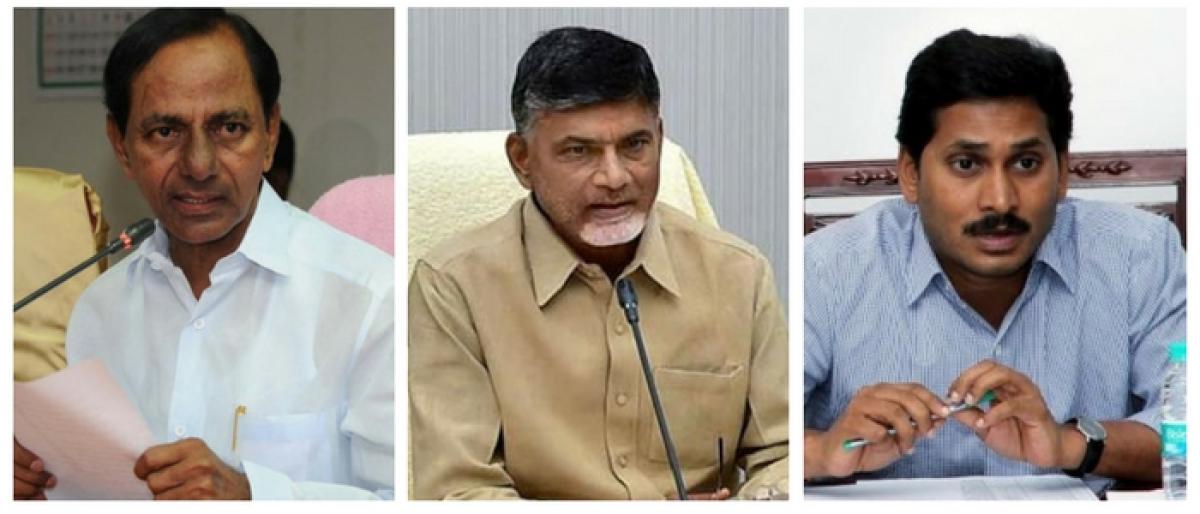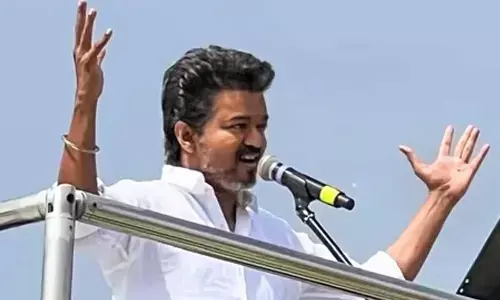The future of Reddys

Many reasons – both stated and unstated – guided the then powers-that-be to create the state of Andhra Pradesh in 1956. Andhra Pradesh was the first linguistic state created in India and thus implicitly the ruling establishment in New Delhi went by the belief that language was the basis of a homogeneous culture.
Many reasons – both stated and unstated – guided the then powers-that-be to create the state of Andhra Pradesh in 1956. Andhra Pradesh was the first linguistic state created in India and thus implicitly the ruling establishment in New Delhi went by the belief that language was the basis of a homogeneous culture.
Thereafter, many more linguistic states like Gujarat and Maharashtra were established. But there was hidden political agenda behind the Andhra Pradesh creation move as well: having witnessed opposition from the Nizam before Hyderabad state was annexed by India and attempts made by a small section of his population to make common cause with Pakistan, GOI wanted to dismantle the areas covered by the princely state. Most importantly, unnerved by the rise of the Communist Party of India in Andhra state in the first elections after Independence, the powers-that-be wanted a state where the Congress would have a free run.
Politics in India then – and even now – is based on the interplay of castes. The village headmen were called Reddys in parts of south India from ancient times. Over a period of time the position of headman became hereditary and the Reddys coalesced into a community and caste. With Brahmins being a minuscule proportion of the population in this part of south India, the Reddys were at the top of the social heap.
Thus, they were touched first by modernisation and education. When the Congress party came up and expanded, the Reddys were the first to join the party and capture its commanding heights in this region. After Independence, the Reddys wanted to become the ruling elite and the most important Congress leader of the region Neelam Sanjeeva Reddy was instrumental in getting New Delhi to establish the new state of Andhra Pradesh in such a manner that the Congress party and thereby the Reddys could lord over it. As is known, Andhra Pradesh was a result of the union of Andhra state and the Telugu speaking areas of the Nizam’s dominions.
The first major challenge to the Reddy raj that was Andhra Pradesh came in the early eighties from film hero N T Rama Rao. Using his enormous popularity, he cobbled up the Telugu Desam Party (TDP) that took on the Congress successfully and came to power. To the casual observer it was a party challenging the Congress but seasoned analysts knew that it was a Kamma offensive against the Reddys. Rivals of the Reddys in the village – and next only in importance to them – the Kammas had joined the Communist Party for starters.
A hard working, closely knit community, they had progressed economically in 1960s and 1970s, but were politically not empowered. After economic empowerment, they now wanted political empowerment. With NTR in power, the Kammas and the Reddys contested for power in Andhra Pradesh and the matinee idol even tried to erode the Reddy power at the grassroots by doing away with traditional village officers who mostly belonged to the community. This Reddy-Kamma contest continued till Telangana was created in 2014.
The creation of Telangana disturbed the status quo and the Reddys took the hardest knock politically. They lost their politically significant position in the two states that came up after the integrated Andhra Pradesh was broken. In the new Andhra Pradesh, the Congress has been reduced to cipher because of the peoples’ wrath on the creation of Telangana.
This has led to the disempowerment of Reddys and being used to be the ruling class, they are now looking at ways and means of coming back to power.
Though YSR Congress headed by Jagan Reddy promises to empower Reddys and other social groups, he has been unable to generate enough confidence among the voters. Although he now proposes a state-wide padayatra (reminiscent of that undertaken by his father Y S Rajasekhara Reddy before he came to power), the various criminal cases hang around his neck like an albatross. This has reduced his popularity.
The Reddys are looking for empowerment and many mid-level leaders are joining the TDP. But the Naidu government is seen as manifestation of an unabashed Kamma raj and right now the Reddy leaders are not quite comfortable in the party.
In old Andhra Pradesh, the Reddys led a Congress that had Kapus and Dalits as junior partners in the alliance. Kapus (or the cultivator class traditionally) have, however, now come of age and in 2009 when super hero Chiranjeevi formed the Praja Rajyam party it was a manifestation of the Kapu dream of political empowerment. For various reasons, the effort failed but now after the state has broken up, the Kapus are numerically significant.
The proposed entry of Pawan Kalyan (also a matinee star and younger brother of Chiranjeevi) is linked to the dream of Kapu empowerment. If the Reddys were to join him, a winnable combination can be forged. But unlike in the past, the Reddys would now have to become the junior partners of Kapus.
Whether this will be acceptable to them remains to be seen and whether Pawan Kalyan can sustain himself politically is also an important question. The Reddys also have the option of joining the BJP enmasse in alliance that can be win-win for both: the BJP is in search of adherents and the Reddys are in search of a party. But this fit is somehow not happening with the BJP in Andhra Pradesh largely in the control of Kammas who seem to be inimical to the entry of Reddys.
In Telangana, the scene seems to be slightly better for the Reddys than in new Andhra Pradesh. Though they are out of the power matrix in the state, the Telangana Rashtra Samiti (TRS) chief K Chandrashekar Rao is trying to co-opt the Reddys into positions of importance. This is to ensure that the Reddys do not rebel and have a stake in the present dispensation.
This is much like the dispensation of the Nizams where Reddys had been co-opted into the ruling alliance to ensure that the status quo was not disturbed. But much water has flown since the times of the Nizams and after having enjoyed the fruits of power for the last half a century, Reddys are not happy in merely being co-opted into the system.
They want a larger stake but for doing this the Reddys require a charismatic leader who will galvanise them and lead them to victory. The Congress party in Telangana is a divided house with Reddy leaders fighting amongst themselves. Many of them have lost the appetite to fight what with offsprings of some of them with the TRS. A weak national party is also unable to provide leadership to weld together the disparate elements in the Congress and hold them together.
On the other hand, the BJP game plan of building the party in Telangana is not clear. Although the BJP is likely to beef up the party by encouraging leaders from other parties to join them, it is not clear whether this strategy is Reddy-centric. But the Telangana Reddys are hopeful: a very important Reddy told this writer: ‘we are the ruling class, in some way or the other we will manage to come back to power.’ Whether this happens or not, however, remains to be seen.
By: Kingshuk Nag

















